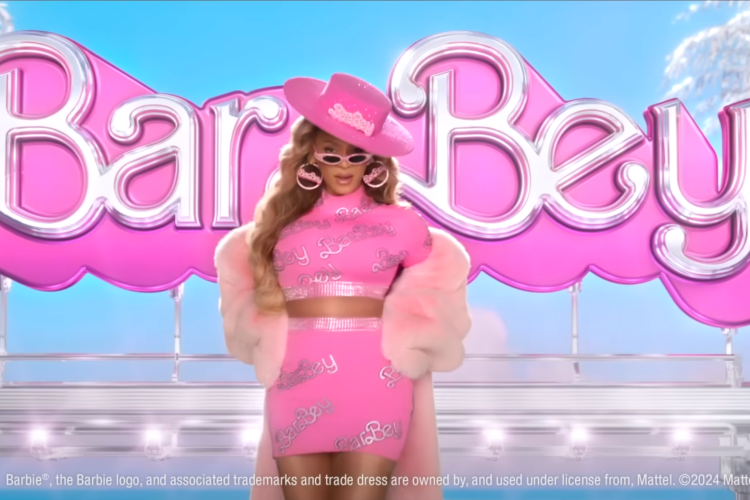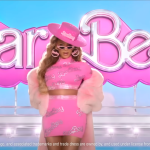
The history of Super Bowl commercials dates back to the first Super Bowl in 1967. However, it wasn’t until the 1970s and 1980s that companies began recognizing the potential for significant reach and brand impact. In 1984, Apple’s “1984” ad, introducing the Macintosh computer, set a new standard. Directed by Ridley Scott, it captivated viewers with its cinematic quality and resonated with a generation wary of conformity. This ad showcased how powerful a well-crafted Super Bowl commercial could be, and it raised the bar for creativity and production values.
Since then, companies have raced to outdo each other, resulting in a genre of advertising unique to this event. Brands now view the Super Bowl as a platform for launching high-impact ads that can influence consumer perception and trends for months or even years.
Why Super Bowl Ads Matter
- Massive Reach: The Super Bowl is consistently one of the most-watched television events in the U.S., drawing over 100 million viewers. This gives brands a rare opportunity to reach a vast, diverse audience.
- Brand Prestige: Advertising during the Super Bowl is considered prestigious, establishing the advertiser as a major player in the market. For some companies, particularly tech or entertainment brands, an impactful Super Bowl ad is seen as a rite of passage.
- Viral Potential: In the age of social media, Super Bowl ads often become viral sensations, shared and discussed online long after the game ends. This extends the reach and lifespan of the ad beyond the initial broadcast.
- Consumer Engagement: Viewers actively watch Super Bowl ads, with many tuning in specifically for the commercials. This engagement is unique, as people are typically less attentive to commercials in other settings.
The Cost of Advertising
Super Bowl ads are notoriously expensive. In 2023, a 30-second spot cost approximately $7 million, reflecting the high demand and the extensive reach. The steep price is justified by the potential return on investment, as a well-executed ad can significantly impact brand awareness, sales, and market position.
However, the high cost also raises the stakes, pushing brands to make the most of every second. For companies with limited budgets, purchasing a Super Bowl ad may involve significant risk. This financial pressure encourages brands to bring their best creative efforts, resulting in ads that often become iconic.
Types of Super Bowl Ads
- Humor-Based Ads: Many Super Bowl ads use humor to entertain viewers. Brands like Doritos, Bud Light, and Snickers are known for their comedic approach. These ads are often light-hearted and aim to make viewers laugh, creating positive associations with the brand.
- Emotional Appeals: Some brands opt for heartwarming or inspirational ads. For example, Budweiser’s Clydesdale ads and Google’s emotional storytelling often resonate deeply with audiences, creating a lasting impact.
- Celebrity Endorsements: Celebrities have become a staple in Super Bowl ads. Companies like Pepsi, Amazon, and others frequently use star power to capture viewers’ attention and add a sense of glamour to their ads.
- Tech and Innovation: Companies in the tech industry, such as Apple, Amazon, and Google, often showcase new innovations during the Super Bowl. These ads are crafted to impress viewers with cutting-edge products or concepts, reinforcing the brand’s position as a leader in the industry.
- Social and Cultural Commentary: In recent years, some brands have used Super Bowl ads to address social issues or make a statement. This can be a risky strategy, as viewers may have mixed reactions, but it can also be incredibly effective when executed thoughtfully.
Impact on Pop Culture
Super Bowl ads don’t just advertise products—they often shape pop culture. Many ads become part of the cultural lexicon, influencing language, memes, and trends. Phrases like “Wassup!” from Budweiser’s 1999 ad or “You’re not you when you’re hungry” from Snickers have become part of everyday conversations. Memes and social media discussions extend the lifespan of these ads, reinforcing their cultural impact.
Super Bowl ads are also known for sparking conversations around the water cooler. People who may not even watch football are often still aware of the most popular ads, showcasing their broad appeal. These ads become shared experiences that bring people together and provide topics for discussion long after the game is over.
The Role of Technology and Social Media
Social media has transformed the way Super Bowl ads are experienced. Platforms like Twitter, Instagram, and YouTube enable brands to engage with viewers in real-time, creating a multi-dimensional experience. Many companies release teasers or “leak” their ads online before the game to build anticipation.
Post-game, ads are analyzed, rated, and shared across social media, giving brands further visibility and feedback. The ability to measure engagement, reactions, and shares provides valuable insights for companies, allowing them to gauge the effectiveness of their campaigns and strategize for future advertising efforts.
In addition to social media, advancements in technology allow for increasingly sophisticated ad production. Virtual reality, CGI, and other visual effects are often utilized to create stunning visuals that captivate viewers. As technology continues to evolve, Super Bowl ads will likely become even more immersive and interactive.
Most Memorable Super Bowl Ads
Here are a few of the most iconic Super Bowl ads:
- Apple’s “1984” (1984): This ad is one of the most famous Super Bowl commercials, credited with transforming Super Bowl advertising. The Orwellian-inspired ad introduced the Apple Macintosh and positioned Apple as a forward-thinking, revolutionary brand.
- Budweiser’s “Frogs” (1995): The ad featuring three frogs croaking “Bud-weis-er” became an instant classic. It was simple, memorable, and helped establish Budweiser as a brand with a humorous edge.
- Snickers’ “Betty White” (2010): This ad, featuring Betty White, kicked off the “You’re Not You When You’re Hungry” campaign. It was a massive success and brought Snickers into pop culture in a big way.
- Old Spice’s “The Man Your Man Could Smell Like” (2010): This quirky, humorous ad featuring Isaiah Mustafa became a viral sensation, showcasing how a creative concept can reinvent a brand’s image.
- Amazon’s Alexa Loses Her Voice (2018): Featuring celebrities like Cardi B and Gordon Ramsay as replacements for Alexa’s voice, this ad humorously highlighted the popularity of Amazon’s smart device.
- Doritos’ “Ultrasound” (2016): Doritos is known for humorous Super Bowl ads, and this one, featuring a baby in an ultrasound reaching for a Dorito, became an unforgettable moment.
Crafting an Effective Super Bowl Ad
What makes a Super Bowl ad successful? Here are a few key factors:
- Strong Storytelling: Super Bowl ads often tell a compelling story in a short time frame. Effective storytelling engages viewers and creates a memorable experience that goes beyond the product itself.
- Memorable Visuals and Audio: Visual and auditory elements are crucial in creating an unforgettable ad. From special effects to catchy jingles, these elements help engrain the ad in viewers’ memories.
- Relevance and Relatability: Ads that resonate with viewers’ lives or current events are often the most impactful. An ad that speaks to a universal truth or a common experience can create a stronger connection with the audience.
- Creativity and Uniqueness: Creativity is what sets Super Bowl ads apart. With so many ads vying for attention, those that stand out are the ones that bring something new, funny, or emotional to the table.
- Product Integration: The best Super Bowl ads integrate the product naturally into the story or concept. This ensures that viewers remember the brand and not just the spectacle.
Criticisms and Controversies
Not every Super Bowl ad is well-received. Some ads have sparked controversy due to sensitive topics, poor timing, or perceived insensitivity. For example, ads that touch on political or social issues can sometimes backfire if viewers feel they are exploitative or insincere.
There’s also the risk of an ad simply failing to connect with the audience, resulting in wasted advertising dollars. With such high stakes, Super Bowl ads can be a gamble, and even big brands have misfired.
The Future of Super Bowl Ads
As advertising continues to evolve, Super Bowl ads will likely adapt to meet new viewer expectations and technological possibilities. Interactive ads, virtual reality, and augmented reality could make future Super Bowl ads even more engaging. Additionally, as streaming and digital media become more popular, Super Bowl ads might expand beyond the TV screen to become multimedia events.
Conclusion
Super Bowl ads have become a staple of American pop culture, blending entertainment, marketing, and spectacle in a way few other mediums can achieve. They provide brands with an unparalleled opportunity to reach a vast audience, and their impact is felt long after the game ends. Whether they’re humorous, heartwarming, or innovative, Super Bowl ads have become more than just commercials—they are part of the experience, eagerly anticipated by millions and often remembered for years.





